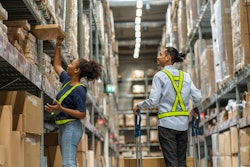
When discarding a cardboard box used to package a product bought online, do you ever think about where it goes afterwards? The increase in online shopping typically results in an increase of wasteful shipping boxes and packaging materials. In fact, the most recent study from the EPA shows that over 34 million pounds of cardboard were thrown in landfills.
In addition to recognizing the environmental effects of poor sustainability practices, consumer demands also play a significant role. The new generation of consumers are environmentally conscious; therefore, they want to do business with companies that share the same ethos. A 2022 survey from Inmar Intelligence found that 54 percent of respondents reported they try to shop sustainably most or all of the time. This top-of-mind priority is only going to continue to grow, so it’s imperative for companies to get started now.
On top of these demands from customers, there are several additional factors pushing companies towards sustainability, including:
- A job candidate’s desire to work for a company that prioritizes sustainability
- Building brand loyalty
- Attracting positive publicity
- Opening growth opportunities for businesses
- Societal pressure– from consumers and key stakeholders
It’s important to make the business case for sustainability clear and understood across an organization. Specifically, in the ecommerce industry, there are several ways to upgrade processes to be more eco-friendly. A recommended first step is for companies to evaluate their packaging processes in order to transform their sustainability strategies.
Start with sustainable packaging.
According to the UN, plastic pollution is set to double by 2030. The easiest step for shippers to take to eliminate plastic within packaging is by switching to only corrugated material that is 100 percent recyclable. This step alone will showcase the company’s commitment to the environment, reduce each package’s carbon footprint and save money and resources in the long run.
To improve sustainability in the warehouse, shippers can create custom-fit parcels to eliminate larger-than-required packages and void fill materials. To do so, companies look to invest in automated packaging solutions that create right-sized boxes around orders at high speeds to fit all sizes and types of orders. These solutions can measure, construct, seal, weigh and label each single- or multi-item order of either hard or soft goods in a custom-fit parcel. They can also create a right-sized box every three seconds using only two operators. Due to fit-to-size packaging, it also offers an average of 50% reduction in shipping volume, resulting in fewer truckloads and reducing CO2 emissions.
While many companies think becoming more sustainable is just the cost of doing business, it’s actually the opposite. With automated packaging, they can be sustainable while saving money and becoming more operationally efficient with automated packaging. By recognizing that both primary and secondary packaging play a role in sustainability, companies can lessen their environmental impact and lower shipping material costs.
By creating the smallest package necessary, these proven auto-boxing technologies generate highly effective packaging and optimize all steps of parcel fulfillment while saving on labor, shipping and material costs and is easy to reuse or recycle.


![Pros To Know 2026 [color]](https://img.sdcexec.com/mindful/acbm/workspaces/default/uploads/2025/08/prostoknow-2026-color.mduFvhpgMk.png?auto=format%2Ccompress&bg=fff&fill-color=fff&fit=fill&h=100&q=70&w=100)







![Pros To Know 2026 [color]](https://img.sdcexec.com/mindful/acbm/workspaces/default/uploads/2025/08/prostoknow-2026-color.mduFvhpgMk.png?ar=16%3A9&auto=format%2Ccompress&bg=fff&fill-color=fff&fit=fill&h=135&q=70&w=240)







